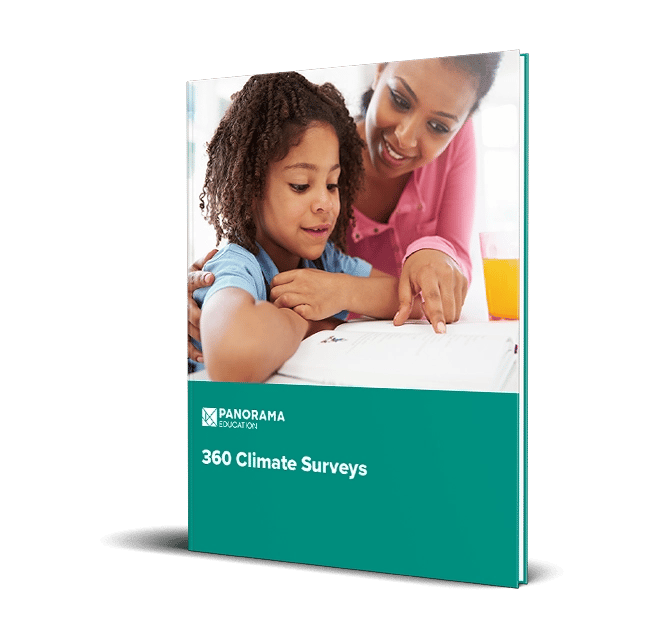When running a feedback survey, it's important that the data gathered represents the voices of as many students and families as possible. To do this, your district can work toward increasing the survey response rate. A high response rate gives you better data, which informs strategic planning and decision-making processes. Additionally, a high response decreases the risk of non-response bias.
However, raising response rates can be challenging. Factors such as time, incentives, and investment can all impact the total number of people who complete a survey.
At Panorama, we're experienced at helping districts find solutions to these challenges. Our survey platform sends hundreds of thousands of emails each year to parents, teachers, and staff members to encourage survey participation. Why? Engaging as many stakeholders as possible is a necessity to reach insights that are truly representative.
To understand how we can improve survey response, we've analyzed these email open rates. In this blog, we're sharing some of our findings, along with strategies for raising your district's survey response rate.
Table of Contents
What is a Survey Response Rate?
9 Strategies to Increase Survey Response Rates
Next Steps for School and District Leaders
|
Key Takeaways: Early Stakeholder Involvement: Engage students, families, and staff from the outset of the survey process to build buy-in and ensure that the survey content resonates with them, enhancing the likelihood of participation. Strategic Awareness Campaigns: Implement awareness campaigns through various channels such as posters, emails, newsletters, and social media to remind stakeholders of the survey's importance and encourage participation. Optimal Timing for Email Communication: Schedule survey-related emails to arrive during peak times for open rates, typically during lunchtime (11:00 AM–2:00 PM) and later in the evening (5:00–8:00 PM), to maximize engagement. Convenient Survey-Taking Opportunities: Schedule survey-taking times during convenient periods for students and families, such as during class periods or school events, and keep the survey window open for an adequate duration to ensure full participation. Strategic Reminder Emails: Utilize reminder emails effectively to drive engagement, considering factors like personalization, social proof, and timing to maintain engagement without inundating recipients. |
What is a Survey Response Rate?
When running a survey, one number that receives frequent attention is the "response rate." This is the number of responses a survey has received divided by the total number of those who received the survey. For instance, if 1,500 respondents have taken the survey out of 10,000, then your response rate is 15%.
A high response rate is vital to receiving actionable and valuable data to improve your school. It ensures that data is representative of your community and supports strategic planning. While survey administration differs from district to district, there are standard best practices to promote higher response rates.
9 Strategies to Increase Survey Response Rates
1. Get students or families involved early in the survey process
To ensure higher response rates, build stakeholder buy-in throughout the entire survey process. Involve students, families, and staff early and communicate frequently with them. You’ll want to give them a chance to weigh in on the content of the survey so that you get feedback on the areas that matter.
For example, if you’re designing a student voice survey, you could ask students about the skills they think are most important to success. If students, families, and staff value feedback and reflection topics, they are more likely to take the survey.
2. Launch an awareness campaign
After building investment in the survey content, you could launch an awareness campaign in the weeks leading up to the survey. Consider hanging posters or handing out stickers, as these can remind students that their participation in the survey is important.
For parents, we recommend leveraging the channels that your schools usually use. Newsletters, emails, school websites, and social media can all help you get the word out.
3. Send your survey at the right time of day
When looking at email data, we noticed that 84% of emails are opened within the first 24 hours. After two days, only 8% of emails are opened. This means that engagement with "Take your survey" emails sharply declines after the first day.
So if more than 8 out of 10 emails are opened on the first day, then which hours of the day are emails most frequently opened?
There are two daily peaks for when survey emails are opened. The first comes during lunchtime (11:00 AM–2:00 PM), and another occurs later in the evening (5:00–8:00 PM). Emails that are opened during these time windows account for almost half of all emails opened in a given day.
Consider scheduling your emails to arrive between 11:00 AM–2:00 PM or 5:00–8:00 PM. This could greatly increase the levels of engagement in your school survey.
4. Thoughtfully schedule times for survey taking
Our fourth tip is to thoughtfully schedule times for survey taking. With students, it’s usually best to have them take the survey during a specific class period, like homeroom. Keep the survey window open for at least two weeks to ensure 100 percent participation.
For busy parents, make sure that the survey-taking time is convenient for them. For example, try to get families to take surveys when they’re already at school. You can offer survey-taking rooms during parent-teacher conferences or open computer labs for parents during pick-up and drop-off.
5. Send reminders, but not too many
Parents and teachers lead busy lives, so it can be difficult for them to find twenty to thirty minutes to complete a school survey. That's where reminder emails can help.
Our findings show that reminder emails are an effective tactic in driving engagement. The percentage of emails that are opened remains above 20% until the fourth reminder. However, each successive reminder email is met with diminishing returns:
When sending reminders, it's important to only email those who haven't already completed the survey. Use reminder emails to increase engagement with your survey, but be sure you're not sending too many reminders. Strategies for keeping your emails fresh include:
- Personalizing your messages: "Hi Kelly! We want to hear from you."
- Providing social proof: "4,345 other parents have completed the survey."
6. Send segmented emails
If you're sending the same communications to different stakeholders, then the data may suggest another course of action. It's clear that parents and school staff members (including teachers) open survey-related emails at completely opposite times of the day.
Families tend to open the most emails in the evening (5:00–7:00 PM) or during lunchtime (11:00 AM–1:00 PM). Over two-thirds of emails to parents are opened during those two windows. However, families show noticeably lower email opens during the other working hours (9:00 AM–5:00 PM).
For teachers and other staff members, the exact opposite pattern is evident. Teachers tend to open most survey-related emails during school hours (8:00 AM–3:00 PM), peaking in early morning. In fact, 63% of survey-related emails were opened in that timeframe. Once the school day ends, the number of emails opened by staff sharply declines.
7. Offer a prize for the classroom or school with the highest participation
Another tip is to offer a prize for the classroom or school with the highest participation rate. For example, you could throw an ice cream or pizza party for the winning classroom or school. A little friendly competition goes a long way!
8. Monitor progress and give regular updates
Track progress throughout the survey window to drive participation. Let survey takers know when the deadline is approaching, and keep principals updated on their school’s response rates.
Some schools use progress thermometers on bulletin boards to track towards a participation goal. With families, send out regular reminders before the survey window closes—especially to parents who haven’t yet completed the survey.
9. Close the loop with students, staff, and families
Congratulations—your district has completed its feedback survey! However, it's key to maintain open lines of communication with students, staff, and families. Sharing survey results demonstrates that your district values community feedback.
You can increase the visibility of data by posting results on your school website, in community newsletters, or in emails. Communicate how you will take action on the survey results, and share any next steps your district plans to take.
|
Frequently Asked Questions: How can we effectively address concerns about survey fatigue among stakeholders, particularly if multiple surveys are conducted throughout the academic year? Are there any best practices for interpreting survey data and translating it into actionable insights that drive meaningful change within our district? How can we foster a culture of continuous feedback beyond formal survey periods to ensure ongoing communication and engagement with students, staff, and families? |
Next Steps for School and District Leaders
Creating a positive school climate requires strategic steps and the right resources, including high-quality feedback surveys. Student, staff, and family surveys allow you to capture diverse perspectives from across your district.
With Panorama’s Surveys, you can feel confident in the validity and reliability of your results, knowing you've reached every member of your community. Moreover, armed with robust analytics in a platform like Student Success, you're equipped to transform survey responses into actionable strategies that make a lasting positive impact.







